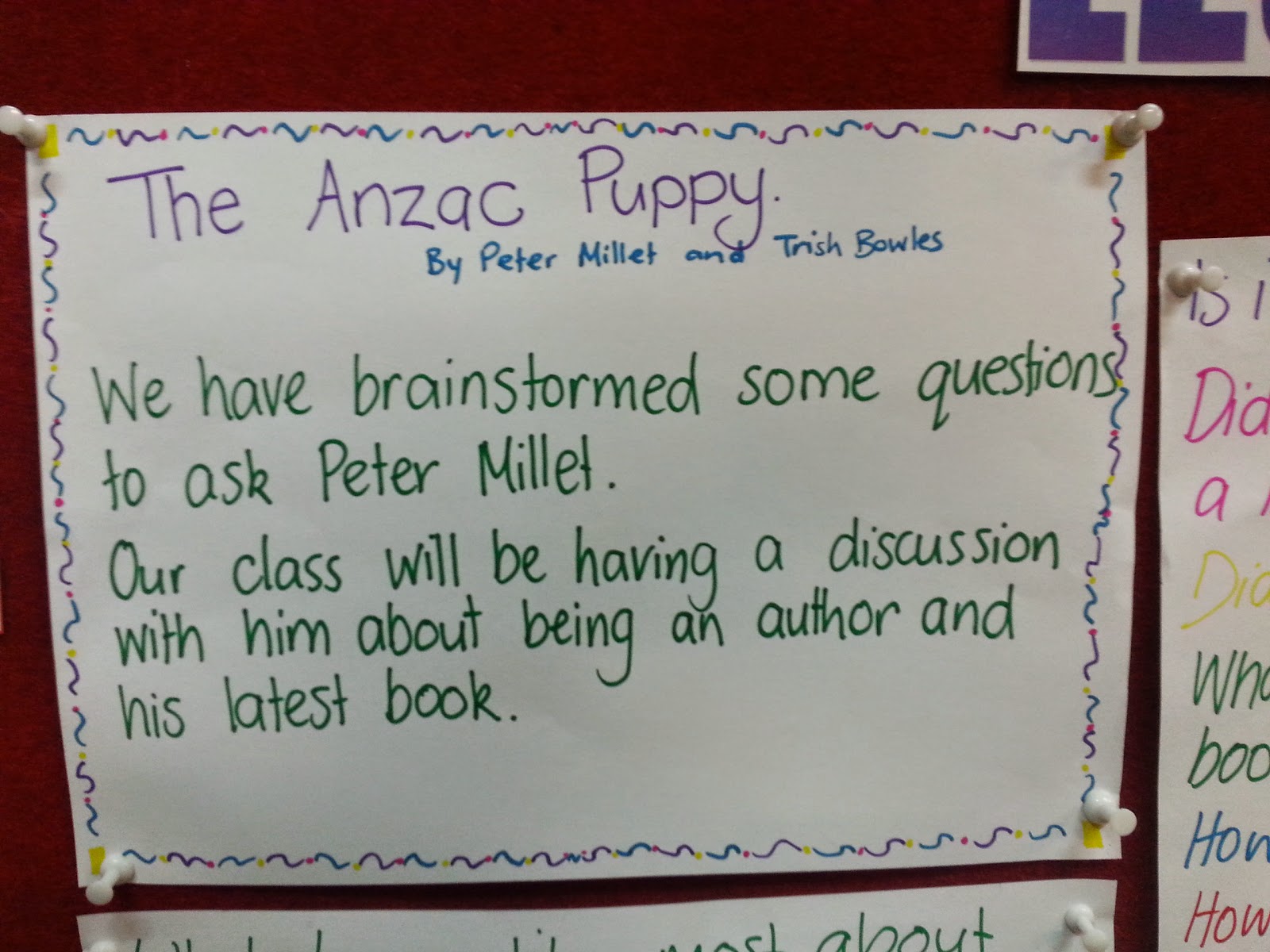The other week I put up a new display about Anzac Day. It's a pretty tame one considering all the possible things I could put up. But the main idea is to get the kids thinking and it gives them some independent activities to do.
The following Monday a couple of really cool buzz things happened for me. One girl had been looking through the local newspapers at the weekend, and when she arrived at school she came over and said, "Look what I found out about Anzac Day in the newspapers!"
I loved the fact that she had cut these articles out of the local papers off her own bat and brought them into school. So I immediately gave her the pins and asked her to add them to the display.
Later the same day, another girl came to me after silent reading. She had one of the books from my Anzac collection she had been reading during SSR. "Look Miss D. That's from the poem we had last week."
She found it in Jackie French's book A Day to Remember - The Story of Anzac Day.
Each week we have a poem of the week and in the first week of this term we did For the Fallen by Robert Laurence Binyon.
This is a pretty full on poem to give to students aged 7, but my current class caters for Years 3-8 in a small two class rural school. Not only do I have to cater for the younger children in my class, but I need to challenge the more able and older children as well. So each week there is a different sort of poem, often with a theme I want to explore.
With this poem we looked at the imagery in the poem, new vocabulary, the variety of punctuation, and blends - a new aspect each day. We also found out a little bit about who Robert Lawrence Binyon was.
Since then, other children have also read this book and recognised the extract from Binyon's poem as well. It is all about planting that seed and seeing what takes root.
So what else have I got going on in this display?
This is a great poster I got from the Scholastic Book Club a few years ago (why don't they come like they used to anymore?). This is a great poster to get the kids thinking about the symbols and rituals of Anzac Day.

This set of statistics is a good way to get the students thinking about and discussing the impact of the First World War on a small, young country like New Zealand.
It gets them thinking about women and how they contributed to the war effort. It makes them think about the contribution of Maori and the people of the Pacific to the New Zealand Armed Forces. It brings to their attention the fact that there was something called a conscientious objector.
These statistics also brings death and the stark reality of war into focus when you look at how many soldiers did not come back out of the103,000 who served overseas, as well as the ones who came back wounded in some way or another.
And is it not amazing to know that there are approximately 500 civic memorials in New Zealand commemorating these men?
These are for the older students in my class. I created these a couple of years ago for independent inquiry on a range of aspects of New Zealand's participation in war. The students choose which one they will do. Each one has web links and different activities to complete based on De Bono's Thinking Hats or Gardner's Multiple Intelligences.
The topics I have put out for the small group of students to do this year include:
- Conscientious Objectors
- Le Quesnoy and New Zealand
- Helping the Wounded
- WWI Memorials
- Medals
- Mascots for WW1 & WWII
One of the first books I read my class this term was The Anzac Puppy by Peter Millett and illustrated by Trish Bowles. I blogged about this book during the term break after I bought a fresh collection of stories to share with the class. Peter Millett somehow really quickly saw my blog and responded to it, saying he'd love to discuss the book with the class. My class brainstormed questions for Peter (see below) and we're set up to do a Skype session with Peter this week.
In my opinion I can not set up an Anzac Day display without the immortal words of Ataturk, the Turkish commander at Gallipoli and later leader of Turkey:
And it is also good to get some other background on some important Gallipoli knowledge and Anzac traditions:
Finally, I was away the other day and the reliever read the class Ceasar the Anzac Dog by Patricia Stroud and illustrated by Bruce Potter.
And he drew this for the kids on the board, so I photographed it, printed it and added it to the display:
I love how everyone who enters my class brings yet another little bit extra to what we are learning and carries on the inspiration.




















































